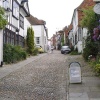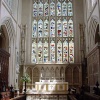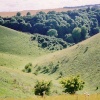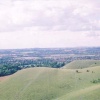Please login or click here to join.
Forgot Password? Click Here to reset pasword
 |  |  |  |  |  |
| Edward Lever Posts: 734 Joined: 22nd Dec 2005 Location: UK | quotePosted at 17:39 on 15th December 2014 Rod, You sound like an old guy because, well yes, you are an old guy! but this applies to me also. All you say in the above post is very familiar to anyone who has grown up using film. The principles have not changed because the sensor is photo-electric these days, rather than photo-chemical. It is extremely easy to forget that the sensor of any digital camera is limited in its exposure range, and the exposure frequently needs tweaking. Auto gives acceptable results on most average scenes, but unusual lighting will confuse it. |
| Rod Burkey Posts: 554 Joined: 2nd Sep 2008 Location: UK | quotePosted at 23:20 on 15th December 2014 Well John, the controls are very much the same, just a lot more options on digital SLRs. We all strive for sharpness (I hope) when it is needed, and your lenses will be more than up to the job. Low light = a tripod or higher ISO, the tripod more able to deliver quality. People get razor sharp images with very long exposure times when using neutral density filters BUT only with a tripod. Taking pictures at concerts is a different ball game as the sense of movement and just capturing the right moment in time overides noise and to a degree sharpness issues along with toyally correct colour rendition. Speaking of ball games, sport is like very concert work for all the same reasons. What kind of images are giving you the most problems? |
| Edward Lever Posts: 734 Joined: 22nd Dec 2005 Location: UK | quotePosted at 08:38 on 16th December 2014 In my previous comments about film camera experiences, I guess I had overlooked the extra variable which comes into play when using digital, namely the adjustable ISO setting. In the days of film, you were stuck with whatever film you had loaded that day, and the choice of film speeds was not great, typically between 25 and 400 ISO. Generally, in anything but daylight, this dictated the use of fast prime lenses. This made it possible to get the rather nice shallow depth of field which characterised the old film portraits. Zoom lenses were around, but were not very good in those days. Now with digital, ISO settings can go up to 25600 or more, fast lenses are less essential, and zooms with a maximum aperture of f/4 to f/5.6 are usually seen on digital cameras. Fast prime lenses are still available, at a high price, for achieving shallow depth of field or to give the extra light gathering power needed for hand-held shots at sports and indoor events. The much greater ISO settings available on digital cameras certainly permit more creativity but add another perplexing variable to be set by the user. Again it is a matter of experience and style, trading off ISO against noise. Personally I like sharpness in a picture, and I will set the ISO to achieve a sufficient sharpness at the selected aperture. Obviously the shutter speed must also be considered, and as Rod says above, might require the use of a tripod in certain conditions. I wonder if ISO is a confusing term for the many people who have never used film. Maybe there should just be a knob on the camera which says 'Video Gain'.
|
| Please login to post to this thread... |